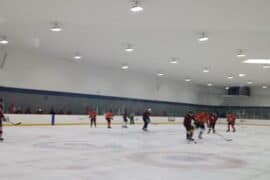Decoding “Gear”: A Parental Insight into Drug Slang
Hello, wonderful parents and guardians! It’s a beautiful day to empower ourselves with knowledge, and today, we’re going to dive into a term that’s been floating around in youth slang: “gear.” If you’ve heard this word in conversations or seen it pop up on your child’s texts and social media, and you’re wondering what it means, you’re in the right place! Understanding the lingo is the first step to ensuring your child’s safety and well-being.
What Does “Gear” Mean in Adolescent Vernacular?
First off, “gear” is one of those chameleon-like words that can have different meanings based on the context in which it’s used. But when it comes to drug references, “gear” often denotes illicit substances, particularly those used for performance enhancement like steroids or, more broadly, any kind of recreational drug. It’s crucial for parents to recognize such terms because it can help reveal if their children are being exposed to drug use or if they’re discussing such topics with peers.
Why is it Important to Keep Up with Teen Slang?
Gaining an understanding of the ever-evolving language of young people isn’t just about being ‘hip’ or ‘cool’ – it’s about being in tune with their world. Staying abreast of the terms and slang that circulate among teens can give you insight into their interests, concerns, and potentially risky behaviors. This knowledge can serve as a bridge to open, judgement-free conversations that foster trust and guidance.
Recognizing the Signs: When “Gear” Comes into Play
Knowledge is gear of the mind, and recognizing the signs of drug use is a key part of that! If your child refers to “gear” in a context that seems unrelated to sports equipment or clothing, it raises a flag for further attention. You might notice more than just language cues; changes in behavior, unusual secrecy about possessions or activities, and shifts in their social circles are all aspects to be mindful of. Every detail could help you better understand your child’s environment and experiences.
Initiating Conversations Around Drug Use
Discovering that your child might be using slang related to drugs doesn’t mean you should jump into confrontation mode. Instead, it’s wise to approach the topic with care and support. Encourage open dialogue without making your child feel targeted or attacked. Use what you’ve noticed as a starting point, expressing your observations and concerns with love and without judgment.
The aim is to create a safe space where your child feels comfortable sharing, which is critical in guiding them towards making informed, healthy decisions. Remember, it’s more beneficial to be a part of their learning and decision-making process rather than just the enforcer of rules.
Conclusion: Your Role in Understanding “Gear”
Arming yourself with information about drug slang like “gear” is an act of love and responsibility as a parent. But remember, slang is just the tip of the iceberg; there’s a whole world beneath the surface of words. Staying connected, keeping communication lines open, and maintaining a non-judgmental stance are some of the best strategies to help your child navigate their choices and challenges.
Bearing witness to the language and behaviors of our children allows us to walk beside them as guides, friends, and the ever-present caring protectors they need. So, let’s continue this journey together, weaving our web of understanding one thread at a time. And stay tuned! There’s more to come in this comprehensive guide where we delve deeper and discuss strategies to keep the conversation going and maintain a meaningful connection with your child.

Five Essential Insights for Parents Preparing for “Gear” as Drug Slang
1. Education is Your Best Tool
A fundamental step in preparing to deal with drug references like “gear” is to educate yourself about drugs commonly used by teenagers. Learn about their effects, risks, and the street names that are frequently used. This includes not just performance-enhancing drugs but also recreational ones. Resources such as the National Institute on Drug Abuse (NIDA) can provide valuable information.
2. Foster a Healthy Home Environment
Create a supportive and communicative environment in your home where topics like drug use can be discussed openly and without fear. When children feel secure, they’re more likely to share their feelings and experiences. Promote healthy lifestyle choices and hobbies that can contribute to a well-rounded and fulfilling life, thus reducing the allure of drugs.
3. Know Your Child’s World
Be actively involved in your child’s life. This doesn’t mean being intrusive, but showing interest in their friends, activities, and interests. By understanding who they spend time with and what they do in their free time, you can better assess any changes or signals that may point to substance use.
4. Look for Behavioral Changes
Beyond the slang term “gear,” you should be attentive to any noticeable changes in your child’s behavior, mood, or appearance. These could include sudden weight changes, sleep disturbances, or an unexplained deterioration in their performance at school or in sports. Any of these can be indicative of drug use.
5. Equip Yourself with Communication Skills
Having conversations about drugs is skirting sensitive territory. Approach these discussions with empathy, active listening, and refrain from immediate judgement or punishment. Phrasing your concerns in the form of questions, such as “Can you help me understand what ‘gear’ means in this message?” opens up a dialogue and educates you on your child’s perspective.
Further, being informed about the local laws and resources available to assist with substance abuse can provide a safety net for you and your child. Whether it’s counseling services, community programs, or hotlines, knowing where to turn for professional help is vital.
Taking the Next Steps
Once you’re aware of what “gear” signifies and you’re equipped with these five essentials, you’re better prepared to handle the situation if it arises. Your proactive stance will not only help you in responding appropriately but also plays a vital role in prevention.
Keep the lines of communication with your child open and consistent. As you navigate this journey together, remember that your guidance is often their compass. You’re not just raising awareness – you’re nurturing resilience and supporting your child in making positive life choices. The teenage years can be tricky, but with love, understanding, and the right approach, you can help steer them in the direction of a healthy and bright future.
This guide is only the beginning. Stay informed, stay involved, and remember, we’re in this together, every step of the way.
See more great Things to Do with Kids in New Zealand here. For more information see here
Disclaimer
The articles available via our website provide general information only and we strongly urge readers to exercise caution and conduct their own thorough research and fact-checking. The information presented should not be taken as absolute truth, and, to the maximum extent permitted by law, we will not be held liable for any inaccuracies or errors in the content. It is essential for individuals to independently verify and validate the information before making any decisions or taking any actions based on the articles.




